
The young woman had nearly reached her gate at Denver International Airport last summer when she suddenly felt lightheaded, leaned toward her husband, then collapsed to the ground in the crowded concourse.
Kate’s husband, John, caught her just before her head would have crashed onto the hard stone floor in the airy new section of Concourse C.
That’s when Kate’s heart suddenly stopped.
“It was terrifying,” said John, as he watched his wife turn blue. “She was convulsing. It looked like she was having seizures.”
Kate had just turned 40 months earlier.
The couple later learned precisely how dangerous Kate’s cardiac arrest had been. She suffered what laypeople call a “widow-maker,” a blockage in the left anterior descending artery. It’s the largest of the three heart vessels, and a blockage of this artery often kills people within minutes.
In Kate’s case, extraordinary strangers — including a nurse, an ER doctor and an airline worker who raced to get a defibrillator — happened to be nearby and immediately jumped into action. Then paramedics and medical pros stepped up. Together, all of these people saved Kate’s life.
“I’m so incredibly grateful,” said Kate. “Without their help, I would have died.”
Added John: “Now Kate has two birthdays.”

Along with celebrating Kate’s birthday in October, the couple plans to mark the anniversary of the day when Kate got a second chance at life. This year, on June 29, they’re looking forward to a camping trip in one of their favorite places: Grand Teton National Park.
Last year on June 29, Kate and John were eager to go on a beach vacation to celebrate the Fourth of July with her family.
Then they experienced the scariest day of their lives.
At 40, her heart failed. But strangers jumped into action to save her life.
Kate and John had packed flip-flops and straw hats for the beach.
They planned to fly from their home in Denver to South Carolina to join Kate’s family on serene Kiawah Island.
Kate hadn’t been feeling great.
“I had a lot of indigestion. I wasn’t sure if I was hungry or nauseous. In retrospect, I think I was lethargic. I had a hard time keeping up with John in the airport, and I’m a fast walker.”
Kate and John met when each worked on the student newspaper at the University of North Carolina-Chapel Hill. He was an investigations editor. She was an assistant photo editor. These days, she works in public policy, and he’s a journalist. (Kate asked to be referred to by her first name.)

The couple moved to Colorado in 2014 and love spending time with their dog and exploring the mountains from hiking to skiing to snowshoeing. Before Kate’s health emergency, they were beginning to train to climb Africa’s tallest peak, Mt. Kilimanjaro, and Kate planned to run her second half-marathon. She was fit and seemingly healthy.
Then, on that June morning, Kate and John arrived at Denver International Airport early enough for their mid-day flight to stop for breakfast at a local favorite, Root Down. Kate could barely eat anything, so she and John soon headed to their gate.
That’s when Kate suddenly collapsed.
As she lay seizing on the ground, John tried to stay calm and went into rescue mode. He asked bystanders for help, then turned Kate on her side so she wouldn’t choke and elevated her feet. He was wondering whether he needed to start CPR when, miraculously, seemingly out of nowhere, a woman rushed over.
“Do you need help?” the woman said, kneeling by John’s side.

She told John that she was a nurse and quickly recognized Kate was turning blue. She started chest compressions as John gave Kate rescue breaths.
Moments later, an ER doctor appeared. He told John and the nurse that they needed to push much harder on Kate’s chest and took over the compressions.
Meanwhile, a Southwest Airlines employee ran onto a nearby plane to grab a machine called an automated external defibrillator or AED, which can shock a person’s heart and bring them back to life.
“They brought the AED over. The nurse set it up and shocked Kate once, but nothing happened,” John recalled.
“That’s when I started feeling really helpless,” he said.
The nurse charged the AED again while the doctor kept pumping hard on Kate’s chest.
“The second the AED was ready, paramedics showed up,” John recalled. “She woke up suddenly.”
A stunning save and a race to the hospital
Relief coursed through John’s body as Kate miraculously rebounded.
Not only was she alive, but she was trying to sit up and immediately started acting like herself: warm, smart, engaging and determined to give a key update to the people who were helping her.
“My dad’s a heart patient,” she told them again and again.

August Clary was among the paramedics from Denver Health who arrived quickly on the scene that day. He and his partner had been stationed in their ambulance at the airport’s western departure gates.
They heard the call for help at 11:34 a.m. and sped on back airport roads straight to a hidden entrance that would lead them directly to the C terminal.

As Clary drove, updates flowed in, and they gave him a sliver of hope.
“We’re watching live updates from our little 911 computer. We’re able to see that there’s been a cardiac arrest. And all of the paramedics are already responding,” he said.
Inside the airport, two paramedics were stationed in each of the three terminals.
“They were hopping on little golf carts and using their own indoor response vehicles to get there with the same urgency as I was as I drove the ambulance. It was an all-hands-on-deck response. The Denver Fire Department always assists us as well,” Clary said.
Paramedics with combined experience of more than 100 years were tending to Kate within five minutes of her cardiac arrest, Clary said.
Even more pivotal were the strangers who stepped up. Their quick actions profoundly boosted Kate’s chances of survival.
“We knew the reality,” Clary said, explaining that cardiac arrests often are fatal.
“But when we found out this woman was receiving immediate bystander CPR, we thought there might be a chance we could get her back.”
Clary and his partner pulled up outside the concourse at 11:39 a.m. and sprinted up from the tarmac to join the group of people tending to Kate.
Then they watched in shock as she literally came back from the dead.
“We walked up. We saw her unconscious and receiving compressions, then all of a sudden, we heard, ‘Stop the compressions.’ She was waking up.”
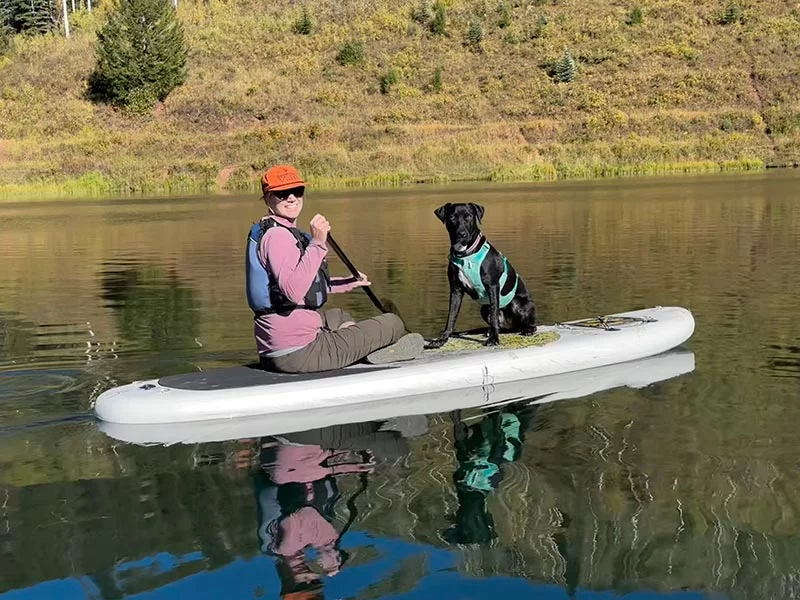
Clary can’t overstate how rare Kate’s dramatic turnaround was.
“We are field experts in cardiac arrest,” he said. “The outcomes can be really depressing. About 90% of the time, you will not have a good neurological outcome. We get to these events. We try our best. We will be extremely aggressive in our efforts every single time.”
But in most cases, patients don’t survive, much less start talking to their rescuers minutes after their hearts have stopped.
That’s exactly what happened in Kate’s case, and a year later, Clary is still in awe of her remarkable turnaround.
“It’s almost a medical anomaly,” he said. “This does not usually ever happen.”
The paramedics worried, however, that whatever had caused Kate’s cardiac arrest might threaten her again soon.
“We were thankful that she was up and talking, but we were still really concerned. We were like, ‘Do not sit up. Try not to panic. Don’t do anything strenuous. Don’t cough. Don’t sneeze. Don’t even move.,’” Clary recalled.
“She was OK, but she shouldn’t have been OK. We were all bewildered.”
Clary served as a Seabee doing construction support in the Navy for eight years, then became an emergency medical technician, and then a paramedic. During his four years working for Denver Health, he estimates he has assisted with 28 cardiac arrests.
“And of those 28, only two have survived (including Kate). It’s depressing, but that’s the accurate number,” Clary said.
So, the paramedics’ message to Kate in the moment was clear: “We’re very happy you’re alive, but we are not out of the woods yet. And we are going to the hospital.”
Fast.
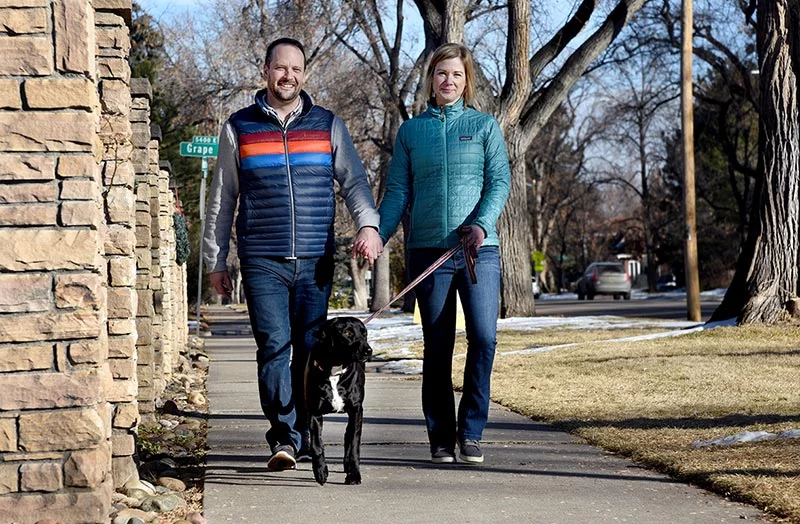
‘We were all expecting her to code again’
Clary, his paramedic partner and the rest of the team loaded Kate onto a stretcher and brought the couple — plus all of their luggage, including the beach hats — to a hidden elevator. From there, they went directly to the ambulance on the tarmac. The paramedics brought two firefighters along for help.
Clary drove.
“Hey John, you’re here with me,” he said, calmly guiding Kate’s husband to sit next to him in the front seat.
Clary didn’t say it out loud, but he was thinking to himself: “Your wife just died. Whatever killed her is still in her, and she shouldn’t be doing as well as she is right now.”
If Kate’s heart stopped again, the paramedics didn’t want John in the back, having to watch if the crew had to try to resuscitate her. And there simply wasn’t any room.
“We were all expecting her to code again. We kept the defibrillator pads on and were doing very intense monitoring.”
Kate’s vitals were strangely normal. Her blood pressure was good. She had no signs of discomfort other than chest pain from having received chest compressions. She had no difficulty breathing. And she didn’t seem to have any neurological deficits, which was very unusual after a cardiac arrest.
So, Clary drove as fast as he safely could to UCHealth University of Colorado Hospital, the nearest facility and a Level 1 Trauma Center, the designation for a hospital that can handle the most challenging emergencies.
The drive from the airport to the hospital usually takes 20 minutes or more. Sirens blaring, Clary made it in 13.
“I was having a very calm conversation with John while thinking to myself, ‘She seems OK, but she’s not better. Whatever stopped her heart in the first place is still there.’”
Clary had no idea in that moment that Kate’s cardiac arrest was the result of a widow-maker blockage. He and his crewmates just knew they needed to get her more help as fast as possible. And their hunch was 100% correct.

A gut feeling: Kate was still in danger
John and Kate showed up in the emergency department at University of Colorado Hospital with straw hats dangling from their bags like they’d gotten lost on their way to a cruise.
The medical providers who greeted them were mystified by this patient, who appeared to be fine.
Kate looked nothing like a typical heart patient, who is often an older man, not a young woman who eats a healthy diet and enjoys doing an intense type of Pilates class known as Fierce45.
Her labs continued to look good. And an EKG showed no signs of distress. But EKGs capture a moment in time, so the medical teams were keeping a close watch to determine what was wrong with Kate.
The answer came a short time later.
From the ER, doctors transferred Kate to the Intensive Care Unit.
There, Dr. Rory Bricker came to see her.
He’s an interventional cardiologist at the UCHealth Heart and Vascular Center on the Anschutz Medical Campus.
As Bricker checked Kate, she seemed well, at first, just as she had in the ER.
“She wasn’t having any symptoms, and she was lucid,” said Bricker, who is also an assistant professor of medicine and cardiology at the University of Colorado School of Medicine.
The team treated her as a “presumed heart attack” with aspirin and IV blood thinners while gathering laboratory and imaging studies to assess for other potential causes of her cardiac arrest since she didn’t appear to have any active symptoms or electrical changes to indicate the diagnosis of an “occluded” or fully blocked vessel. That would have made her situation an emergency. With full blockages, patients go straight to the catheterization lab where Bricker can hunt down blockages and break them up.
Despite Kate’s excellent appearance, Bricker had a gut feeling that she was sicker — and potentially in greater danger — than she initially appeared. He watched her carefully. Then, sure enough, minutes later, Kate complained of minor pressure in her chest.
That was all Bricker needed to hear. He decided to take Kate immediately to what doctors call the “cath lab,” where he could break up any blockages.
“Most of the time, when people are having a heart attack that leads to a cardiac arrest, the symptoms aren’t subtle,” Bricker said. “In Kate’s case, the presentation was quite subtle. She looked great.”
He suspected that Kate experienced a phenomenon that sometimes occurs during a heart attack that leads to cardiac arrest. A blockage temporarily closes off an artery, then it flutters open. While it can temporarily open, it also can close down again. Clary and the other paramedics were right to be concerned about Kate. They transported their patient to the exact pro who could provide Kate with a permanent solution.
In the ICU, Bricker was watching in real time as Kate’s blockage started forming again.
“I wasn’t going to take any chances,” Bricker said. “She wasn’t a complainer, so when she said she was feeling a little discomfort. I knew she had to go in right away.”
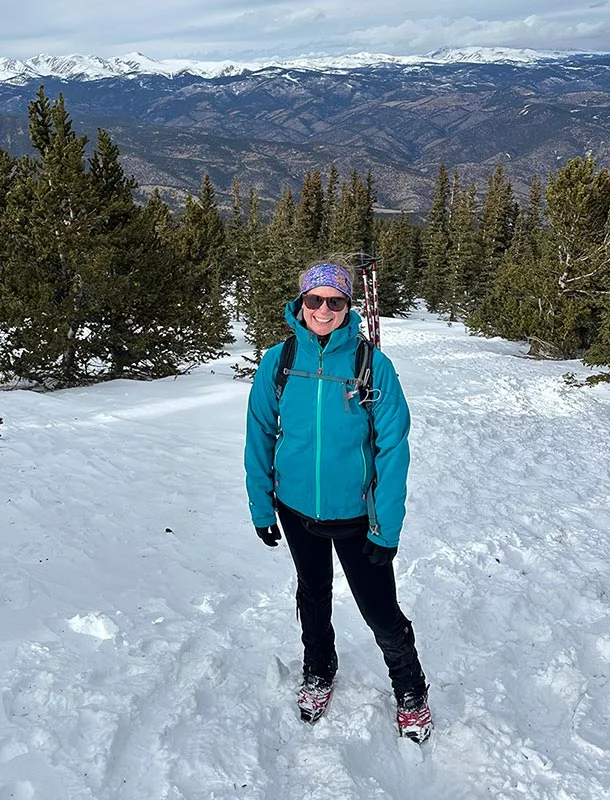
The team rushed Kate into the lab where Bricker threaded a catheter up to the artery where he found it nearly fully blocked again. He placed a stent to force the artery open and keep it open.
“We were able to restore normal blood flow in about 15 minutes,” Bricker said. “The entire procedure usually takes about an hour.”
Altogether, Kate only had to stay two nights in the hospital.
Bricker said she’s very lucky to be alive.
“This is absolutely a story of all of the right people being at the right place at the right time and saving her life,” Bricker said. “It all starts with community education about basic life support and CPR when a person has a heart attack. And it’s why we have external defibrillator devices disseminated all around public places like Denver International Airport or at Broncos games.
“When people step in and restore the heart rhythm, they give people enough time to get to the hospital, where we can make a diagnosis and give durable life-saving treatments,” Bricker said.
How does a heart attack differ from cardiac arrest? And how hard do CPR compressions need to be?
A heart attack happens when a person’s artery is completely blocked. Blood flow to the heart then stops and can cause people to die from what’s called a “fatal heart arrhythmia.”
When blood stops flowing to the brain, that’s called a stroke.
When blood stops flowing to the heart, it’s called a heart attack.
“The coronary arteries bring blood to the heart muscle. When there’s an interruption of the blood flow, the heart muscle can die. And that’s called a myocardial infarction or a heart attack,” Bricker said.
“A cardiac arrest is when someone experiences a fatal arrhythmia, and someone dies and has to be brought back to life. There are a lot of causes for cardiac arrest. One of the most common causes is a blocked heart artery.”
As young and healthy as Kate appeared to be, that’s exactly what happened to her.
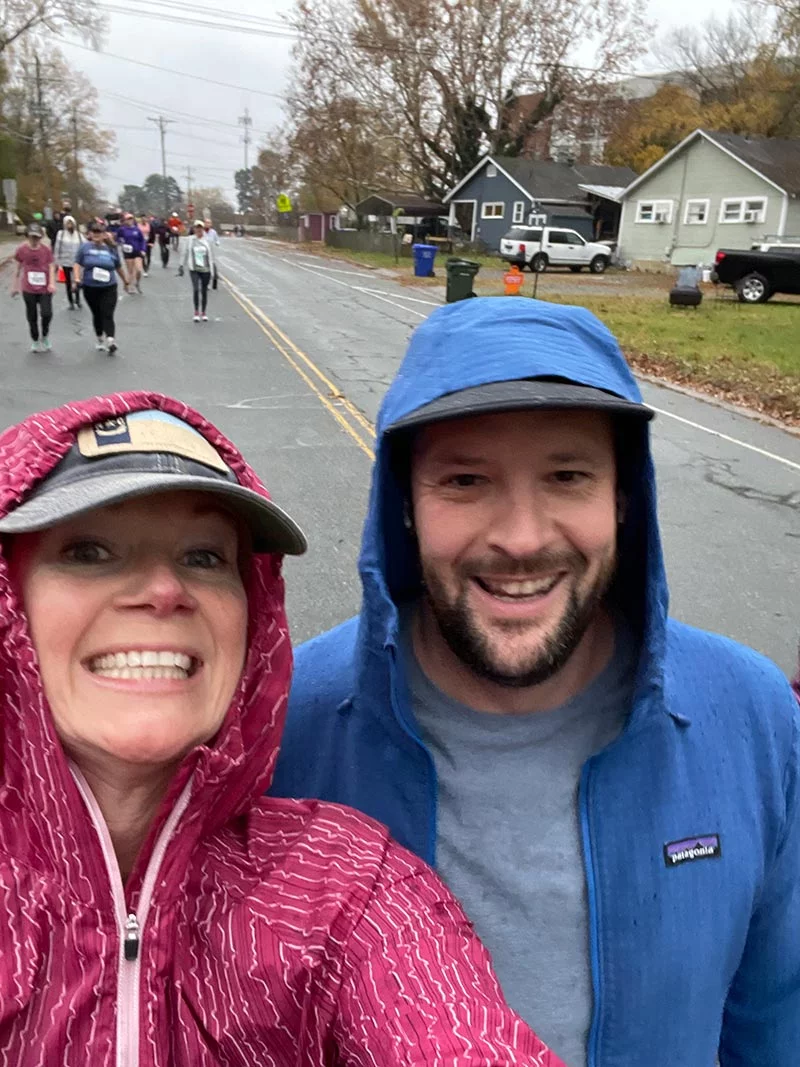
“It was as serious as it gets,” Bricker said. “When someone has a cardiac arrest, their heart stops functioning, and they become unconscious. If there’s a prolonged interruption of the blood flow, then heart muscle and brain tissue can die.”
Bricker said that the immediate bystander help Kate received was instrumental in saving her life and preventing any lasting damage.
Like the ER doctor who helped Kate at the airport — and whose name they were never able to get — it’s vital for people to know that effective CPR compressions need to be deep and hard. The strangers who saved Kate in the concourse pressed so hard that they broke some of her ribs. And that kind of pressure was 100% correct, Bricker said.
“You have to push hard against the heart to restore circulation. At least 2 inches deep is recommended. The goal is to try to maintain perfusion (or blood flow) to vital organs. Either the heart will spontaneously start beating again. Or the person may need an external jolt of electricity to reboot the heart and restore the normal rhythm,” he said. “While our goal is not to fracture the ribs, it often can occur during effective CPR.”
In Kate’s case, since the first shock from the AED did not work, Bricker suspects that the CPR was pivotal.
“When someone loses their pulse, it’s vital to start CPR immediately,” he said. “To save someone from a cardiac arrest, we need a great chain of care, just like we saw in this case.”
When people have heart attacks, how important is it for bystanders to act quickly?
Fast response times are absolutely critical, Bricker said.
“One of the greatest predictors of neurologic recovery is tied to how long it took for the person to get CPR and the amount of CPR a person had,” he said. “Effective CPR keeps vital organs — including the brain — alive, giving us time to fix the heart.”
People who receive good care in the field do much better over the long run, Bricker said.
In Kate’s case, aside from needing to be on heart medications and routinely monitored by both her primary care doctor and her cardiologist, she suffered no long-term damage to her heart, brain or other organs. Bricker said with ongoing preventive care, she can expect to live a long, healthy, normal, active life.
Are the symptoms of heart problems different in women than in men?
Bricker said it’s rare for an apparently healthy young woman like Kate to suffer a cardiac arrest, much less a potentially fatal blockage.
Kate had experienced symptoms of heart problems that some women experience, which can be different from classic symptoms of angina.
For example, until Kate was in the hospital, she never felt pressure or pain in her chest. Instead, she noticed some pain in her arms. But she never dreamed that it could be connected to heart problems. Instead, she might have blamed a tough workout.
And she had some digestive issues, which Bricker said can be a sign of heart problems in women.
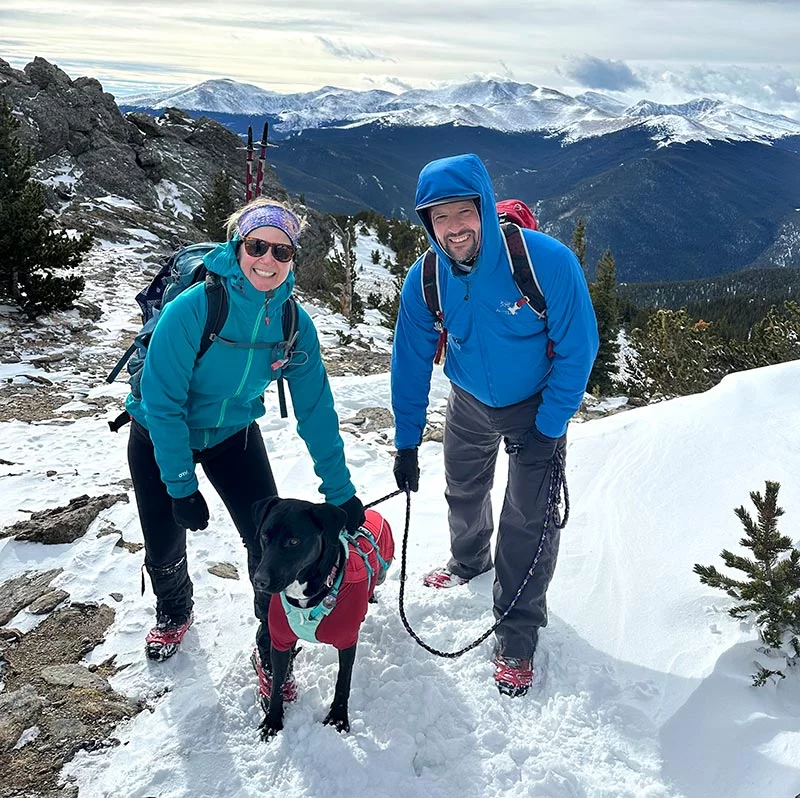
“Nausea or heartburn-like sensations can be a symptom of angina, and this is more commonly seen in women and diabetic patients,” he said.
“These symptoms can be overlooked. The classic sign of angina (or chest pain from a narrowed heart artery) is pressure on the chest that radiates to the jaw and down the arm,” Bricker said. “Women most often experience these classic symptoms. However, they can also experience stomach discomfort such as nausea and vomiting as a sign of a heart attack more commonly than men.”
Another common symptom of a heart attack in a woman is jaw pain or pressure, which Kate also experienced.
Women should seek help if they have an array of strange symptoms like nausea, arm or jaw pain, sweatiness or shortness of breath.
In Kate’s case, even as the blockage was forming again in the hospital, Bricker said her symptoms were anything but obvious.
“Her symptoms were quite mild. It was odd. She was sitting there talking to us like nothing had ever happened.”
So, as challenging as it is for women to detect heart problems, Bricker advises them to pay close attention to their bodies and to speak up.
“The message should be: ‘If you feel something is wrong and have any concerns, call for help.’”
And people should immediately call 911 in the following cases:
- If a person experiences sudden and intense symptoms of chest pressure, neck or jaw discomfort, shortness of breath, sweatiness, or nausea that lasts more than a few minutes.
- If a person has stuttering symptoms that go away and come back.
- If pain or other symptoms wake you from sleep.
“Angina-like symptoms that wake you from sleep are usually very concerning,” Bricker said.
Many women are busy, and many tend to downplay pain or discomfort. But speaking up is vital. And the focus should not be entirely on the heart area. Bricker trains colleagues to watch for other signs of heart attacks in women.
“Yes, this is a chest issue. But it doesn’t always show up as chest pain. It can be pressure or discomfort in the arm or the jaw. Or a patient can experience nausea, sweatiness, general malaise, epigastric discomfort — all of those things,” he said. “It can be subtle.”
Are more young people — and more young women — experiencing heart attacks?
Bricker personally has been seeing more young people — those ages 40 or younger — who are experiencing heart attacks.
Research from the American Heart Association in 2018 found that heart attacks were on the rise among young people, particularly women. And more recently, Heart Association experts found an increase in heart attacks among younger people in rural areas.
The spike in heart attacks among younger people could have many causes.
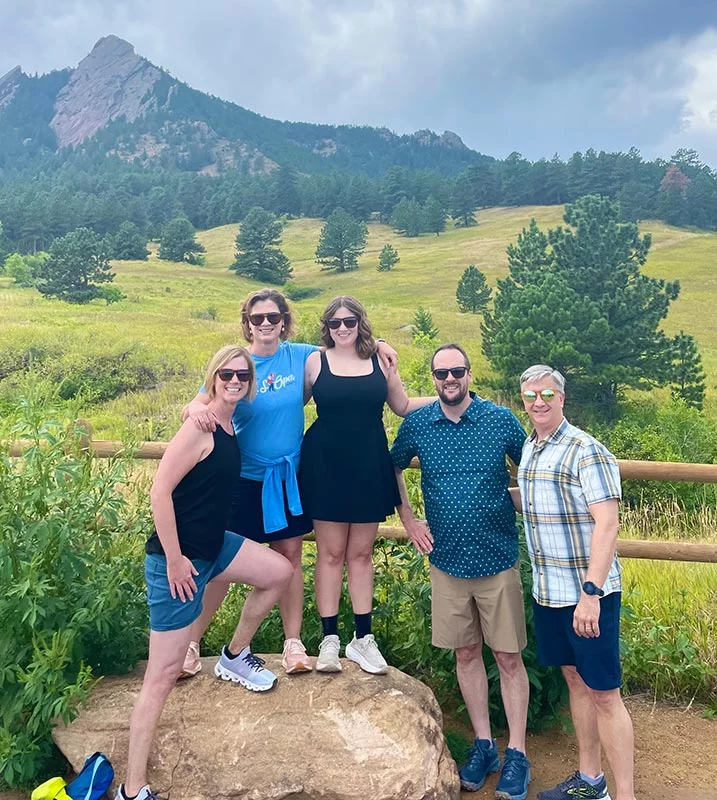
Family history can play a role, as it did for Kate.
Her dad was diagnosed with heart disease at age 33 and had bypass surgery at 45. When he was 65, he suffered cardiac arrest at the gym, and an AED saved his life. He is doing well and is now 79. Unfortunately, cardiac issues run in the family. Kate’s dad’s father died of a heart attack at age 43.
“It was always something I paid attention to. I know how to eat well. It was always a conversation in my family,” she said.
Bricker said people with a family history of coronary artery disease need to be on guard, as Kate was. Along with a greater risk of heart attacks, some people have genetic abnormalities that can cause cholesterol problems.
For others, higher rates of obesity and diabetes, along with increasingly sedentary lifestyles, are boosting the threat of heart problems in younger people.
“It’s important for people to get their cholesterol and blood pressure checked regularly and to have a primary care doctor who can review your cardiac risk factors, whether you’re in your 40s or your 70s,” Bricker said.
At all ages, it’s vital to keep an eye on risk factors.
“Preventive care is key,” Bricker said.
And while we think of heart attacks as striking older men more than women or younger people, Bricker says it’s vital to expand our awareness about coronary artery disease.
“Everyone has some baseline risk,” he said.
He advises people of all ages to adopt healthy habits, including the following:
- Do not smoke cigarettes. “Tobacco is a huge risk factor,” Bricker says.
- Exercise regularly.
- Eat a healthy diet. Bricker recommends the Mediterranean diet. Evidence shows it reduces the risks of cardiovascular problems.
- Talk to your doctor about a healthy weight. Ask for help if you’re overweight or obese.
- Prevent and manage diabetes.
Heart function is ‘totally normal’ now
In Kate’s case, her health is outstanding. Tests following her medical emergency have been remarkable.
“Her heart function is normal. There is no evidence of a heart attack,” Bricker said.
In other words, the fast actions of everyone who helped Kate spared her from any long-term damage.
“I’m just ecstatic that she’s doing so well,” Bricker said.
Recovering took a bit of time. Days after her heart attack, Kate remembers how difficult it was to drag herself down the block in their Denver neighborhood to watch the traditional Park Hill Fourth of July parade last year. She and John both have endured some sleepless nights as they worried that her body might “try to kill her again.”
“Some of it is learning to trust yourself. If something doesn’t feel right, you need to advocate for yourself,” Kate said. “Women aren’t as good at advocating for ourselves. Deep down, I knew something wasn’t right. We need to trust ourselves and keep pushing and keep advocating.”
Kate has taken her time recovering physically and graduated from her cardiac rehabilitation program in October.
These days, she has help from an excellent primary care doctor and a cardiologist who help her keep close tabs on her health, but she has no restrictions.
She and John enjoyed great ski trips in both Colorado and Utah over the winter. And Kate has traveled many times — both for work and for fun — over the past year through the concourses at Denver International Airport.
“It’s a little surreal. In many ways, I’m still processing it,” Kate said.
She hasn’t yet had a flight out of the exact gate where she collapsed a year ago: C-50. But she and John ventured back this month to South Carolina to meet Kate’s family for the Kiawah beach trip they hoped to do last year.
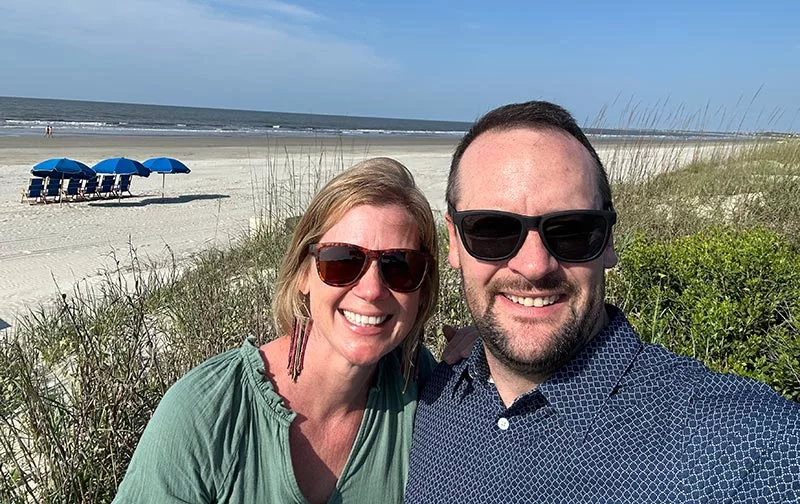
As the couple celebrates Kate’s new second birthday this month, John will be thinking of the kind rescuers whose names they both wish they knew.
“They appeared like angels, from nowhere and everywhere at the same time. To save my wife’s life,” John wrote in the Axios Denver newsletter soon after Kate’s heart attack.
“I wouldn’t recognize their faces. The whole episode was a blur. I want to thank them. They and all medical professionals who instinctively rush to help when help is needed, knowing their skills can save lives.”
When Kate and John visit Grand Teton National Park, they love to drive up from Lander, Wyoming.
“You come up over this pass, and boom, there they are,” Kate said of the majestic, craggy Teton mountains.
“It feels like they rise up out of the ground right in front of you,” she said. “Being in the wilderness, being outdoors, is one of my favorite places.”
As she enjoys that iconic view, Kate anticipates that many emotions will wash over her.
She’ll feel fear and vulnerability and joy and gratitude.
Most of all, she’ll feel incredibly lucky.
“I don’t feel like I had anything to do with it. But what if I had been in a Lyft on my way to the airport, or what if it had happened 20 minutes later, and I’d been on the plane?” Kate said. “You play out so many different scenarios, and it just feels like a lot of luck.
“I’m just so grateful to all of the people who helped me along the way: from bystanders and the first responders to nurses and doctors and my doctors now,” she said.
No matter how tough the last year has been, Kate and John have been left with a new perspective on life’s beauty.
Said Kate: “There’s just so much humanity and kindness.”
